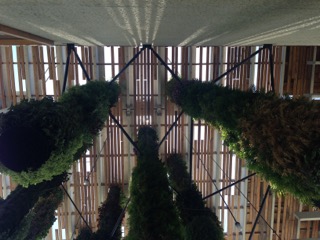The Pérez Art Museum in Miami, Florida, PAMM, has as incredible a building as it does a mission. Founded in 1984 and originally called the Center for Fine Arts, PAMM began as a partnership with the Metropolitan Dade County Government showing only temporary exhibitions. Later evolving into a private museum with a permanent collection dedicated to international art of the 20th and 21st centuries, PAMM’s mission continues to be to reflect Miami’s “diverse community and pivotal geographic location at the crossroads of the Americas.” Its sustainable waterfront facility is designed by Herzog & de Meuron to do just this.
Inspired in large part by Florida’s mangrove trees, Herzog & de Meuron’s design sits over the waterfront in a similar fashion to the trees themselves. PAMM’s many narrow columns and horizontal canopy veranda structure facilitate community oriented visitor experience while continuing to be innovative and sustainable. In a place as warm and rainy as Miami, sustainable air cooling practices were important for the cite specificity of PAMM’s design and continue to be one of the buildings biggest environmentally integrative strengths. In addition, PAMM’s builders were the first in America to use the cobiax system, a technological process that creates a similarly coffered foundation to the Parthenon in Rome, reducing the amount of concrete used for the facility.
Similarly economical, the trellis patterns of PAMM’s ceiling/ canopy save both material and energy. On the north side of the building where there is relatively little sun hitting the structure, the trellis pattern is the least dense, while on the south side, the trellis pattern creates as much shade as possible to keep visitors naturally comfortable. Simultaneously, air conditioning units reside in PAMM’s gallery floors, sending cool air immediately to visitors, and then exhausting through slots in the ceiling as the air gets warmer, avoiding wasting energy by cooling an entire gallery from top to bottom. PAMM’s hanging gardens, which are watered internally, naturally cool air that passes through them. Instead of letting frequent rainwater runoff create drainage patterns that could hurt the building’s surroundings, the foliage system at the center of PAMM’s structure allows water to pass straight through the building and then percolate back into the ground.
These aspects and much more make PAMM such a thoughtfully designed facility that we absolutely love to visit.

